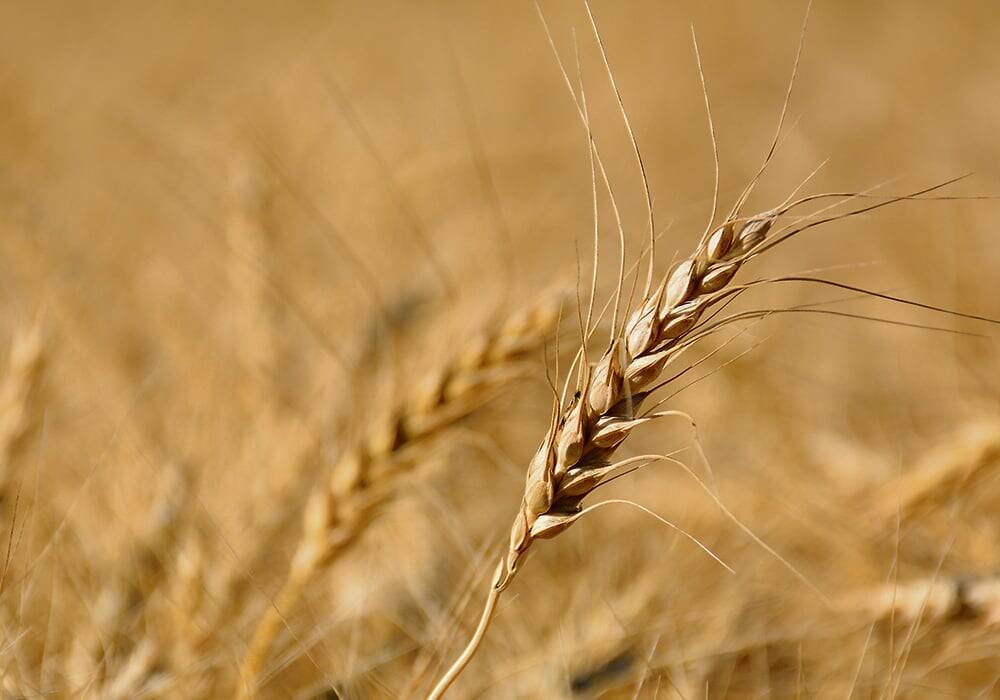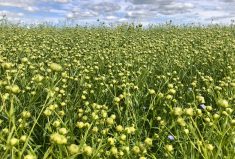Glacier FarmMedia – Last summer’s drought in southwestern Saskatchewan was not enough to prevent 2023 from being a positive year for the province’s mustard growers.
Rick Mitzel, executive director of the Saskatchewan Mustard Development Commission (SaskMustard), said 2023 was a successful year for growers and the organization.
“Overall, we were happy with 2023,” he said. “It would’ve been nicer to have a little more rain and a little more yield, but (those) you can’t control.”
In total, 130,246 tonnes of mustard seed were produced in Saskatchewan, 76.3 per cent of Canada’s crop, in 2023-24 according to Statistics Canada. The 463,700 acres of mustard seed grown in Saskatchewan last year was the largest amount since 2004-05.
Read Also

Prairie CWRS bids rise, other wheats mixed
Canada Western Red Spring (CWRS) wheat bids across the Prairie provinces saw some strength during the week ended Nov. 11, taking some direction from the United States futures. However, other wheat classes were mixed.
Despite a lower yield than the previous year hot and dry growing conditions, it was the largest crop for both Saskatchewan and Canada since 2018-19 due to the increased acres.
Another highlight for SaskMustard was rising demand for hybrid brown and composite yellow varieties of mustard. Growers saw the benefits of seeding them instead of the usual varieties, according to Mitzel, adding that it’s part of the seed’s evolution.
“You’re seeing more vigorous plant growth, quicker ground cover and higher yields. The extra biomass that you get out of growing these two varieties will give you higher yields. Our hybrid brown is yielding about 20 per cent higher than the conventional brown, like Centennial for example. Our yellow composite variety will yield 10 per cent higher than the Andante, which is the current standard for open-pollinated (varieties),” he said. “They end up being extra money in (growers’) pockets.”
Mitzel added that mustard yields outside of Saskatchewan’s southwest region were “very satisfactory”.
Last year’s seeded area and production helped further replenish Saskatchewan’s mustard supplies for the benefit of export markets.
“The demand is still there from export markets. In Canada, we’ve probably built back up our ending stocks which maybe have started to put some downward pressure on prices. But if you look at where the prices are, they are still very good for the mustard grower,” Mitzel said.
The high-delivered bid for yellow mustard was 78 cents per pound, down 47 cents from the year before, according to Prairie Ag Hotwire. For brown mustard, the price went down 70 cents from the year before at 55 cents, while the high-delivered bid for Oriental mustard was 56 cents, a year-by-year decline of 69 cents.
At a recent presentation he attended, Mitzel heard that Canadian acres may drop to between 500,000 to 550,000 acres this year, compared to 637,400 in 2023-24. Two reasons for the decline were getting the seed into crop rotations as well as prices.
SaskMustard is working on a few projects in the current year, through the federally and provincially funded Sustainable Canadian Agricultural Partnership. These include studying greenhouse gas emissions, a breeding program and working with the Saskatchewan Food Industry Development Centre to create mustard-based pet food.
“One of the key things we work on is new uses for mustard. So we’re hoping by working on these new uses, we can expand the acres for mustard by creating more demand for it,” Mitzel said.
— Adam Peleshaty reports for MarketsFarm from Stonewall, Man.














